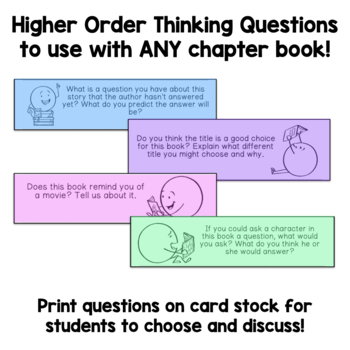Students could create a Kahoot! that only incorporates one example of each type of figurative language.
Students could create a Kahoot! that only incorporates similes, metaphors, and personification
Students could create a Kahoot! with no added pictures/illustrations.
Your task is to create a Kahoot! for your classmates that will test them on their knowledge of figurative language.
Your kahoot should have 20 questions.
Your kahoot should use each of the 6 types of figurative language (at least 3 times for each) that we have reviewed.
You should vary the order!!!
You will give a sentence that contains figurative language and the answers will tell what type was used.
You should find a complimentary picture for each question (using photosforclass.com) to add to your Kahoot!
Tuck Everlasting is a great book for seeing how figurative language plays into great writing. As you begin this web-quest, you will want to refresh your memory about what figurative language is.
Here are the forms of figurative language we will focus on as we read :
Simile
Metaphor
Personification
Alliteration
Onomatopoeia
Hyperbole
A simile compares things to one another by using the words 'like' or 'as'. It better helps to describe how something looks, feels, smells, tastes or sounds by comparing the object to something else with which we are familiar.
From Tuck Everlasting: 'The first week of August hangs at the very top of the summer, the top of the live-long year, like the highest seat of a Ferris wheel.'
A metaphor also compares two different things, but it does not use a word of comparison such as 'like' or 'as'.
From Tuck Everlasting: 'The wood was at the center, the hub of the wheel.'
Personification is a form of figurative language in which an animal or object is given human characteristics.
From Tuck Everlasting: 'The house was so proud of itself that you wanted to make a lot of noise as you passed,...'
Alliteration is the occurrence of the same letter or sound at the beginning of adjacent or closely connected words.
From Tuck Everlasting: 'Winnie clutched her fishing pole, sitting sideways in the stern...'
Onomatopoeia is the formation of a word from a sound associated with what is named (e.g., cuckoo, sizzle ).
From Tuck Everlasting: 'Tick-tock, tick-tock, tick-tock'
Hyperbole is exaggerated statements or claims not meant to be taken literally.
From Tuck Everlasting: 'It was the hottest day yet, so heavy that the slightest exertion brought on a flood of perspiration.'
During your quest, you will be looking to create a great and fun game that will help you and your classmates to learn more about figurative language!
To log into the Kahoot! creator site, go to: https://create.kahoot.it/login
If you don't have an account, visit here for directions and here to sign up.
Once your are logged in, create your kahoot! following the example of the photo below.
Remember to use PhotosForClass to find your pictures. It automatically generates a citation when you download the photo.

